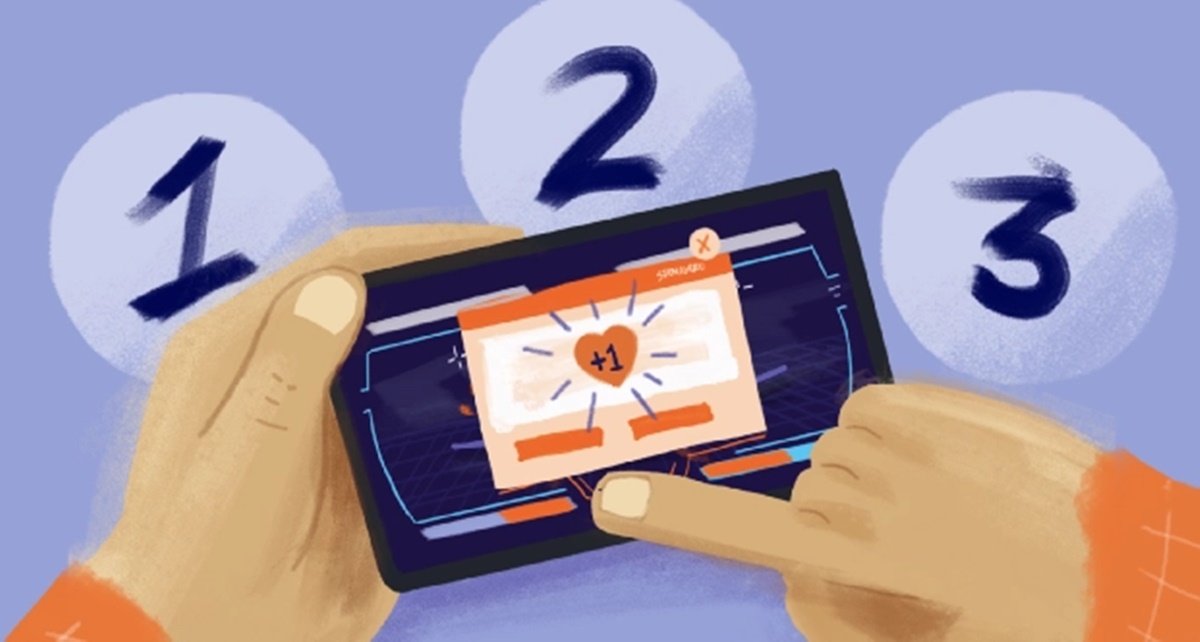Freemium: The Basics
Freemium, a portmanteau of “free” and “premium”, is a business model that combines free and paid elements. In the context of gaming, it refers to games that are free to download and play, but offer optional in-app purchases or microtransactions that allow players to enhance their experience or access additional content.
One of the key aspects of the freemium model is that it lowers the barrier of entry for players. Anyone with a smartphone or computer can download and start playing the game without having to make an upfront payment. This accessibility has contributed to the widespread popularity of freemium games across various platforms.
The freemium model offers a taste of the game’s core gameplay and mechanics for free, enticing players to invest their time and potentially money into the game. By offering a compelling experience without a financial commitment, developers can attract a larger player base and potentially generate revenue through optional purchases.
These optional purchases can take various forms, such as cosmetic items, in-game currency, or access to additional levels or features. While some players may choose to make these purchases, others can continue enjoying the game without spending any money. This flexibility allows players to engage with the game at their own pace and budget.
Freemium games often employ various strategies to encourage players to make in-app purchases. This includes limited-time offers, exclusive items, or gameplay advantages for those who choose to invest in the game. These tactics are designed to create a sense of urgency or enhance the perceived value of the purchases.
However, it is essential to note that freemium games should be approached with caution. The “free” aspect of these games can sometimes be misleading, as players may feel compelled to spend money to progress or compete effectively. It’s crucial for players to exercise self-control and make informed decisions about their spending habits.
Overall, the freemium model has revolutionized the gaming industry by making games more accessible and providing developers with alternative revenue streams. It has opened up opportunities for unique gaming experiences and allowed players to engage with games on their own terms. However, it’s important for players to understand the potential pitfalls of the freemium model and make informed decisions about their gaming habits and spending.
The Evolution of Free-To-Play Gaming
Free-to-play (F2P) gaming, a subset of the freemium model, has gone through a significant evolution over the years. It has transformed from a niche concept to a dominant force in the gaming industry, revolutionizing how games are developed, monetized, and consumed.
The emergence of F2P gaming can be traced back to the rise of browser-based games in the early 2000s. These games offered players a taste of gameplay for free but relied on advertisements or in-game purchases to monetize their offerings. Titles like “FarmVille” by Zynga and “Club Penguin” by Disney became widely successful, introducing the concept of free but with optional paid content.
As technology advanced and smartphones gained popularity, F2P games made their way onto mobile platforms. The introduction of app stores, such as Apple’s App Store and Google Play, provided an ideal distribution platform for developers to reach a massive audience. Mobile F2P games like “Candy Crush Saga” and “Clash of Clans” exploded in popularity, generating substantial revenues through in-app purchases.
With the success of F2P on mobile, the model started gaining traction in the PC and console gaming spaces. Developers began experimenting with F2P mechanics in traditionally paid games. Games like “Dota 2” and “League of Legends” adopted the F2P model, offering players free access to the core game while monetizing through cosmetic items, character unlocks, and other optional purchases.
One significant milestone in the evolution of F2P gaming was the shift towards a more player-friendly approach. Initially, some F2P games relied on aggressive monetization tactics that heavily incentivized spending and created a pay-to-win environment. However, as player expectations changed and competition in the F2P market increased, developers began focusing on offering fairer gameplay experiences and fostering a sense of community.
Today, F2P gaming has become a dominant force, with thousands of titles across various platforms. Major publishers and developers have fully embraced the model, releasing F2P games alongside their traditional paid titles. The blend of accessibility, compelling gameplay, and optional purchases has made F2P gaming a viable business model for both indie developers and industry giants.
Additionally, the advent of live-service games has further shaped the landscape of F2P gaming. These games offer a continuous stream of content updates, events, and community engagement, creating long-term player retention and revenue opportunities. Successful live-service F2P games, such as “Fortnite” and “Apex Legends,” have demonstrated the immense potential and profitability of this model.
Pros and Cons of Freemium
Like any business model, the freemium approach in gaming has its advantages and disadvantages. Understanding the pros and cons can help players and developers make informed decisions about their involvement with freemium games.
Pros of Freemium:
- Accessibility: One of the biggest advantages of freemium games is their accessibility. Players can download and start playing the game for free, eliminating any financial barriers.
- Large Player Base: Due to its free nature, freemium games often attract a large player base. This can lead to a vibrant community and increased social interactions within the game.
- Flexible Spending: Freemium games allow players to spend money at their own discretion. They can choose to make optional purchases to enhance their gaming experience but are not obligated to do so.
- Continuous Updates: Developers of freemium games tend to provide regular updates and new content to keep players engaged. This can lead to an ever-evolving gaming experience with fresh challenges and features.
- Low Risk: For players unsure about investing in a game upfront, freemium offers a low-risk opportunity to try it out. If they enjoy the game, they can choose to spend money, and if not, they can simply move on without any financial loss.
Cons of Freemium:
- Potential for Exploitation: Some freemium games rely heavily on pushy monetization tactics that can exploit players’ psychological tendencies and create addictive behaviors. It’s crucial to be aware of these tactics and set personal limits to avoid overspending.
- Pay-to-Win Dynamics: In certain freemium games, there can be a significant imbalance between paying and non-paying players. This can create a competitive disadvantage for those who choose not to spend real money on in-game purchases.
- Progression Limitations: Freemium games may implement artificial progression barriers that encourage players to spend money to overcome them. This can create frustration and hinder the overall gaming experience for players who prefer a more natural progression system.
- Privacy and Data Concerns: Some freemium games collect and utilize player data for targeted advertisements or other purposes. Players should be cautious about sharing their personal information and review the privacy policies of the games they play.
- Potential Overspending: Due to the flexible spending nature of freemium games, players can get caught up in the desire to acquire in-game items or achievements, leading to overspending. It’s essential to set budgets and exercise self-control to maintain a healthy relationship with freemium games.
Understanding the pros and cons of the freemium model can help players make informed decisions about their participation. It’s important to approach freemium games with a clear understanding of personal boundaries and gaming preferences.
The Psychology Behind Freemium
The success of freemium games lies not only in their gameplay mechanics but also in their ability to tap into the psychology of players. Developers employ various strategies rooted in human behaviors to encourage engagement and monetization within freemium games.
One of the key psychological aspects utilized in freemium games is the concept of “loss aversion.” Players are more averse to losing something they already have than to not gaining something new. This principle is often leveraged by developers by offering limited-time events, exclusive items, or bonuses that create a fear of missing out (FOMO) if players do not make a purchase.
The freemium model also makes use of the psychological phenomenon known as the “endowment effect.” This effect suggests that people tend to attribute more value to something they perceive as already belonging to them. By offering players a free experience at the beginning, developers aim to engage them emotionally and create a sense of ownership over the in-game progress, making them more likely to invest in the game.
Another psychological element at play in freemium games is the concept of social proof. People are influenced by the actions and behavior of others, and developers leverage this by including social features within their games. Friends’ progress, achievements, or in-game purchases can be displayed to create a sense of social competition or desire to keep up with others, motivating players to spend money to stay on par with their peers.
The principle of “gamification” is also prevalent in freemium games, wherein game mechanics and design elements are used to encourage continued engagement. By incorporating elements like leveling up, achievements, leaderboards, and rewards, developers can stimulate the brain’s pleasure center and drive players to play more, invest more time, and potentially spend money on in-game enhancements.
Moreover, freemium games often implement a concept known as “skinner box mechanics” or operant conditioning. This refers to the incorporation of variable rewards, similar to the behaviorist experiments conducted by B.F. Skinner. Players receive intermittent rewards, such as rare items or random drops, which taps into the brain’s reward system and creates a compelling desire to continue playing and spending money in hopes of receiving more rewards.
While these psychological techniques can enhance player engagement and monetization, it is important to approach freemium games with mindfulness and self-control. Understanding the psychological strategies at play allows players to make informed decisions about their spending habits and maintain a healthy balance between enjoyment and financial responsibility.
The Financial Side of Free-To-Play Gaming
Free-to-play (F2P) games have proven to be highly lucrative for developers, offering a range of monetization opportunities beyond the traditional one-time purchase model. Understanding the financial side of F2P gaming provides insights into why this business model has become so prevalent in the industry.
One of the primary sources of revenue in F2P games is in-app purchases (IAPs) or microtransactions. These optional purchases allow players to enhance their gaming experience, access exclusive content, or acquire cosmetic items. These purchases can range from small, inexpensive items to larger bundles or subscriptions, appealing to different player preferences and budgets.
Virtual currency is often used as the medium for in-app purchases. Players can obtain virtual currency through gameplay or by purchasing it using real money. This virtual currency can then be used to make in-game purchases, providing a seamless and convenient transaction process for players.
Developers employ various strategies to encourage players to spend money in F2P games. Limited-time offers, discounts, or exclusive items create a sense of urgency and scarcity, motivating players to make impulse purchases. Additionally, engaging gameplay and well-designed in-app purchase systems can create positive player experiences, further encouraging spending.
Another significant revenue stream in F2P gaming is advertising. Developers can integrate ads into their games, either through static placements, video ads, or rewarded ads, where players receive in-game rewards for watching ads. Advertising can provide a consistent revenue stream without relying solely on player purchases and can be especially beneficial for games with a large player base.
Sponsorships and brand partnerships are also prevalent in F2P games. Developers may collaborate with external companies to feature their products or services within the game, offering promotional opportunities and additional revenue sources. These partnerships can provide developers with financial support while allowing players to engage with real-world brands within the gaming environment.
The long-term sustainability and profitability of F2P games heavily rely on player retention. Developers focus on creating engaging and addictive gameplay experiences to keep players coming back. By continuously providing updates, events, and new content, developers can foster player loyalty, increasing the likelihood of ongoing revenue through in-app purchases and advertising.
It’s important to note that F2P games can vary widely in terms of revenue generation. Some games may have a small but dedicated player base that spends heavily on in-app purchases, while others may have a larger player base with a smaller percentage of paying players. Balancing monetization strategies with player satisfaction is crucial in maintaining a sustainable and ethical business model.
Overall, the financial aspect of F2P gaming presents numerous opportunities for developers to monetize their games beyond the traditional one-time purchase model. By offering a combination of in-app purchases, advertising, and partnerships, developers can create a sustainable revenue flow while providing players with engaging, accessible gaming experiences.
The Impact on Game Development and Design
The freemium model has had a significant impact on game development and design, shaping the way games are created, monetized, and experienced by players. This model has introduced new considerations and challenges for developers, while also providing opportunities for innovation.
One of the main impacts of the freemium model is the shift in focus from a one-time purchase to long-term player engagement. Developers now prioritize creating games that can retain players over an extended period, rather than focusing solely on the initial sale. This has led to the rise of live-service games, which provide continuous updates, events, and community interaction to keep players invested in the game.
The freemium model also emphasizes the importance of balancing monetization with player satisfaction. Developers must carefully design and implement in-app purchases to ensure they add value to the gameplay experience without creating unfair advantages or excessive paywalls. Games with a “pay-to-win” dynamic can alienate players and lead to negative reviews and decreased player retention.
In terms of game design, freemium games often incorporate elements that promote engagement and encourage spending. Mechanics such as daily rewards, limited-time events, and social interactions are integrated to keep players coming back and motivate them to make in-app purchases. Developers utilize data analytics to understand player behavior and optimize the game’s design to maximize revenue and player satisfaction.
Additionally, the freemium model has sparked innovation in gameplay mechanics and content delivery. Developers have to strike a delicate balance between offering a compelling free experience and providing enticing content that players are willing to pay for. This has led to the rise of creative monetization strategies, such as offering cosmetic items, season passes, or subscriptions. It has also encouraged the development of free games with high production values, providing players with visually stunning experiences at no upfront cost.
Furthermore, the freemium model has democratized game distribution, allowing indie developers to compete on a global scale. With the accessibility of app stores and digital platforms, developers no longer need substantial financial resources or backing from major publishers to release a game. This has led to a more diverse and innovative gaming landscape, as smaller studios have the opportunity to showcase their creativity and reach a wide audience without significant financial risks.
However, it is important to acknowledge the potential risks and challenges associated with the freemium model. Developers may face pressure to prioritize monetization over gameplay quality, leading to a decline in overall player satisfaction. Balancing the financial goals of the business with the artistic and creative aspects of game development can be a delicate undertaking.
Freemium vs. Traditional Gaming Models
The freemium model has disrupted the traditional gaming industry, challenging the dominance of traditional gaming models that rely on upfront purchases. Understanding the differences between freemium and traditional gaming models sheds light on the advantages and disadvantages of each approach.
Traditional Gaming Models:
In traditional gaming models, players typically pay an upfront cost to purchase the game. This one-time purchase grants access to the full content and features of the game without additional charges. Traditional models include physical copies of games sold in retail stores, as well as digital downloads through platforms like Steam or console marketplaces.
One of the primary advantages of traditional gaming models is that players gain immediate access to the full game experience without any in-game purchases or restrictions. The initial investment ensures that players can enjoy the entirety of the game without worrying about additional costs or limitations.
However, traditional gaming models also have their limitations. Games can be quite expensive, especially for highly anticipated titles or those with extended development periods. This pricing model might deter price-sensitive players or those who are uncertain about the game’s quality or longevity.
Freemium Gaming Model:
Freemium games, on the other hand, offer free access to the core game while providing opportunities for players to make optional in-app purchases. This model allows players to experience the game without committing any upfront payment, making it more accessible to a wide range of players.
The freemium model has gained popularity due to its flexibility and lower entry barrier. Players can determine the value of the game and choose whether or not to invest money based on their preferences and engagement level. This model also benefits developers by potentially reaching a larger player base and generating revenue through a smaller percentage of paying players.
However, the freemium model has its downsides as well. Some freemium games have been criticized for their aggressive monetization tactics, creating a pay-to-win dynamic or overwhelming players with constant opportunities to spend money. This can degrade the overall gaming experience and lead to frustration or dissatisfaction.
Comparing the Models:
When comparing freemium and traditional gaming models, there are several key considerations. Traditional models offer a complete game experience for a fixed price, providing certainty and value for players willing to pay upfront. In contrast, freemium models offer a more accessible entry point, allowing players to try the game before deciding whether or how much to spend.
Both models have their place in the gaming industry, with traditional models suiting players looking for a complete and uninterrupted experience upfront, while freemium models cater to a wider player base and offer the possibility of long-term engagement and revenue through optional purchases.
Ultimately, the choice between freemium and traditional gaming models depends on individual player preferences, budgetary constraints, and desired gaming experiences. Developers must carefully consider the target audience and game design when deciding which model to adopt, balancing financial goals with creating satisfying player experiences.
Freemium in Popular Games: Success Stories and Failures
The freemium model has been embraced by numerous popular games, leading to both success stories and notable failures. Examining these examples provides insights into the factors that contribute to the success or failure of freemium games.
Success Stories:
One standout success story in the freemium gaming space is “Fortnite” by Epic Games. This battle royale game achieved immense popularity by offering a free-to-play experience that appealed to a wide range of players. With its engaging gameplay mechanics, regular content updates, and cosmetic item purchases, “Fortnite” generated millions in revenue and became a cultural phenomenon.
“Clash Royale” by Supercell is another freemium success story. This mobile strategy game combines real-time multiplayer battles with collectible card elements. Supercell designed the game to encourage competitive play and progression through its matchmaking and ranking systems. The monetization model focuses on optional in-app purchases for special items and card upgrades, enabling players to progress faster or enhance their strategies. The captivating gameplay and balanced monetization contributed to the game’s longevity and financial success.
Failures:
Not all freemium games achieve the same level of success. “Dungeon Keeper” by Electronic Arts (EA) is often cited as a prominent failure in the freemium space. The game offered a free-to-play experience accompanied by long wait times, limited resources, and aggressive monetization tactics. This led to widespread backlash from players who felt the game prioritized squeezing money from users over providing an enjoyable experience. The negative reviews and negative publicity damaged the game’s reputation, serving as a cautionary tale of how not to implement freemium mechanics.
An example of a game that struggled to find success in the freemium market is “Marvel Heroes” by Gazillion Entertainment. Despite having a strong brand and an established player base, the game faced challenges in its monetization model. The in-game purchases were perceived as overly expensive and did not offer sufficient value for players. This, coupled with technical issues and a lack of content updates, ultimately led to the closure of the game. The failure of “Marvel Heroes” highlights the importance of a well-balanced monetization strategy and ongoing content updates to maintain player interest.
Factors Contributing to Success:
Successful freemium games typically exhibit several key factors that contribute to their achievements. A compelling and engaging gameplay experience is crucial, as players are more likely to spend money on a game they enjoy. Providing a clear value proposition for in-app purchases, such as cosmetic items or additional content, helps players feel that their money is well-spent. Regular updates and support from developers further enhance the game’s longevity and maintain player interest.
Factors Contributing to Failure:
Failures in the freemium space often stem from issues such as aggressive monetization tactics, excessive paywalls, or a lack of player value perception. Balancing monetization with the player experience is essential, as pushing too hard for transactions can harm player satisfaction and trust. Additionally, neglecting to address technical issues, lack of content updates, or failing to respond to player feedback can lead to a decline in player engagement and ultimately the failure of the game.
Overall, the success or failure of freemium games depends on skillful design, effective monetization strategies, ongoing support, and a keen understanding of player preferences. Balancing revenue generation with player satisfaction is a delicate task that developers must carefully navigate to create a sustainable and enjoyable freemium gaming experience.
The Future of Freemium: Trends and Predictions
The freemium model has had a significant impact on the gaming industry, and its influence is expected to continue to grow in the future. Analyzing current trends and making predictions about the future of freemium gaming offers insights into where the industry is headed.
Continued Dominance in Mobile Gaming:
Freemium games have found tremendous success in the mobile gaming market, and this trend is predicted to persist. As smartphones become more powerful and internet connectivity becomes ubiquitous, the accessibility of freemium games on mobile devices will continue to attract a large and diverse player base. Developers will focus on optimizing their games for mobile platforms and capitalizing on the potential for increased engagement and revenue.
Expanding into New Platforms:
While freemium games have thrived on mobile, there is a growing potential for expansion into other platforms. With the rise of cloud gaming and streaming services, freemium games could become accessible on platforms like consoles, smart TVs, and even virtual reality devices. This expansion into new platforms would open up new audiences and revenue opportunities for developers.
Enhanced Gameplay Experiences:
The future of freemium gaming will likely witness a focus on delivering even more engaging gameplay experiences. Developers will invest in creating immersive worlds, polished graphics, and compelling narratives that rival the quality of traditional paid games. By providing high-quality free content, developers can build player loyalty and trust, encouraging them to make in-app purchases to enhance their gaming experience further.
Monetization Innovations:
Developers will continue to innovate in terms of monetization strategies to strike a balance between revenue generation and player satisfaction. New approaches may include personalized offers based on player preferences, subscription-based models, or even blockchain-based economies that offer increased transparency and ownership to players. Additionally, the integration of non-intrusive advertising and sponsored content may become more prevalent in freemium games.
Social and Competitive Features:
The future of freemium gaming is likely to see the enhancement of social and competitive features within games. Developers will focus on creating robust multiplayer experiences, fostering communities, and facilitating player interactions. Social features such as in-game tournaments, team-based gameplay, and seamless integration with social media platforms will become more commonplace, driving player engagement and fostering a sense of community within freemium games.
Positive Player Experiences:
As the freemium model continues to evolve, there will be an increased emphasis on ensuring positive player experiences. Developers will prioritize fair monetization practices, transparent communication, and responsive customer support to build trust with players. By actively addressing player feedback, concerns, and complaints, developers can foster long-term loyalty and maintain a healthy relationship with their player community.





